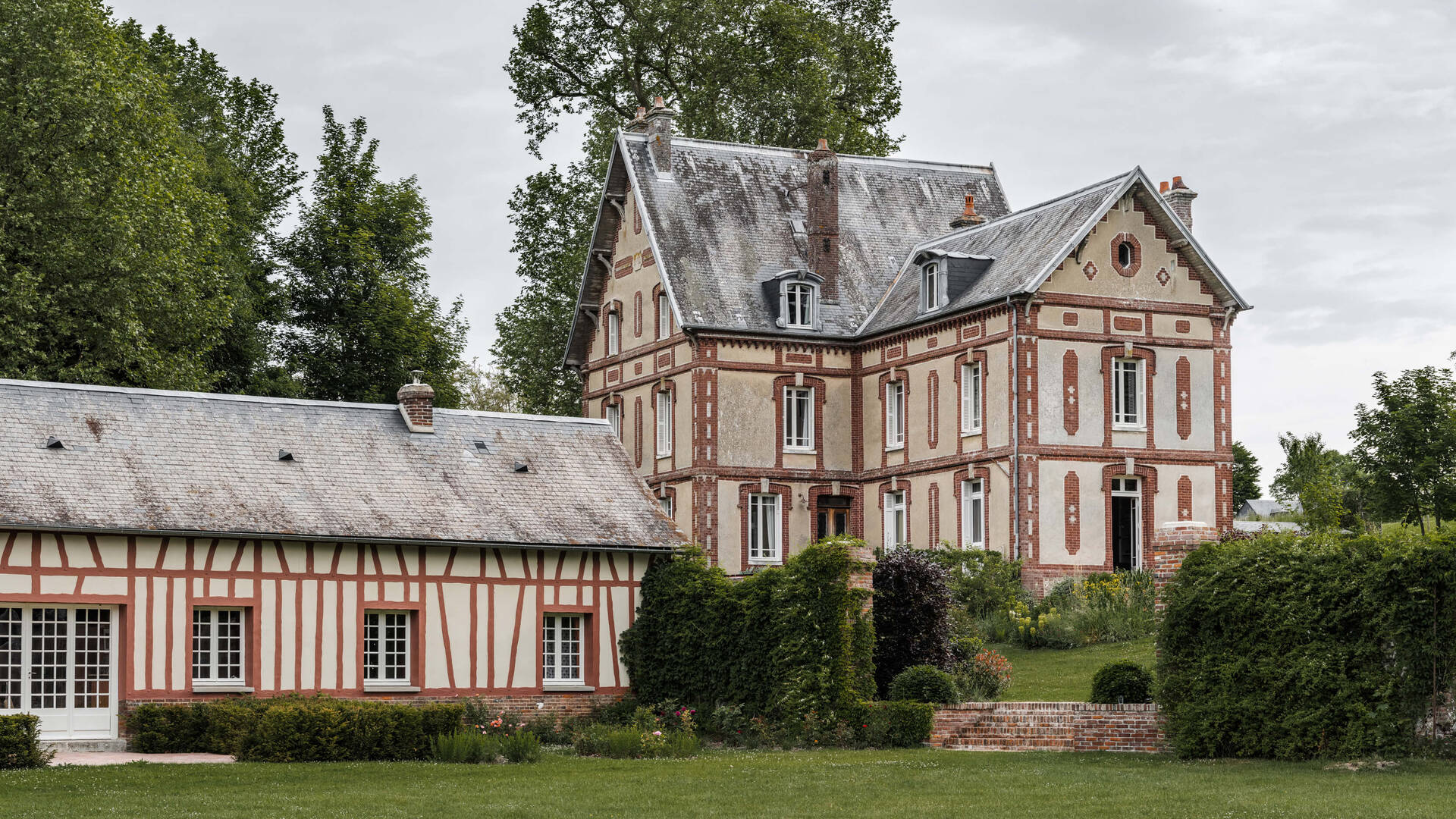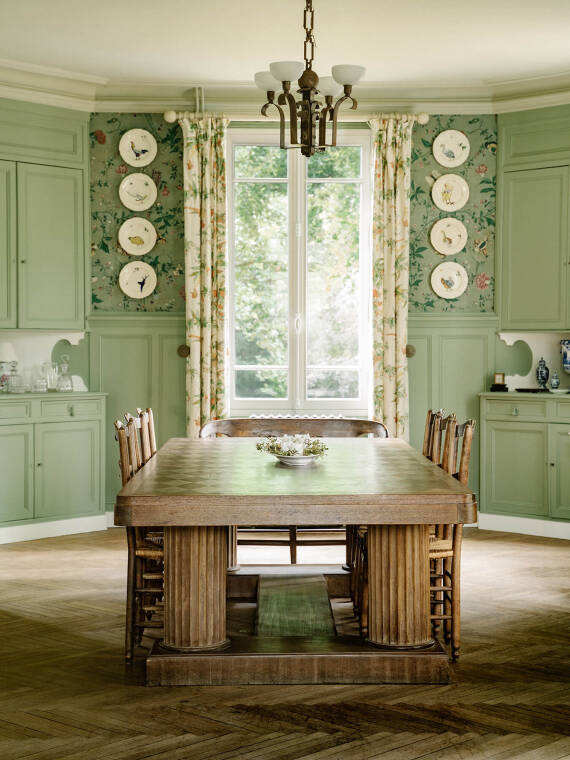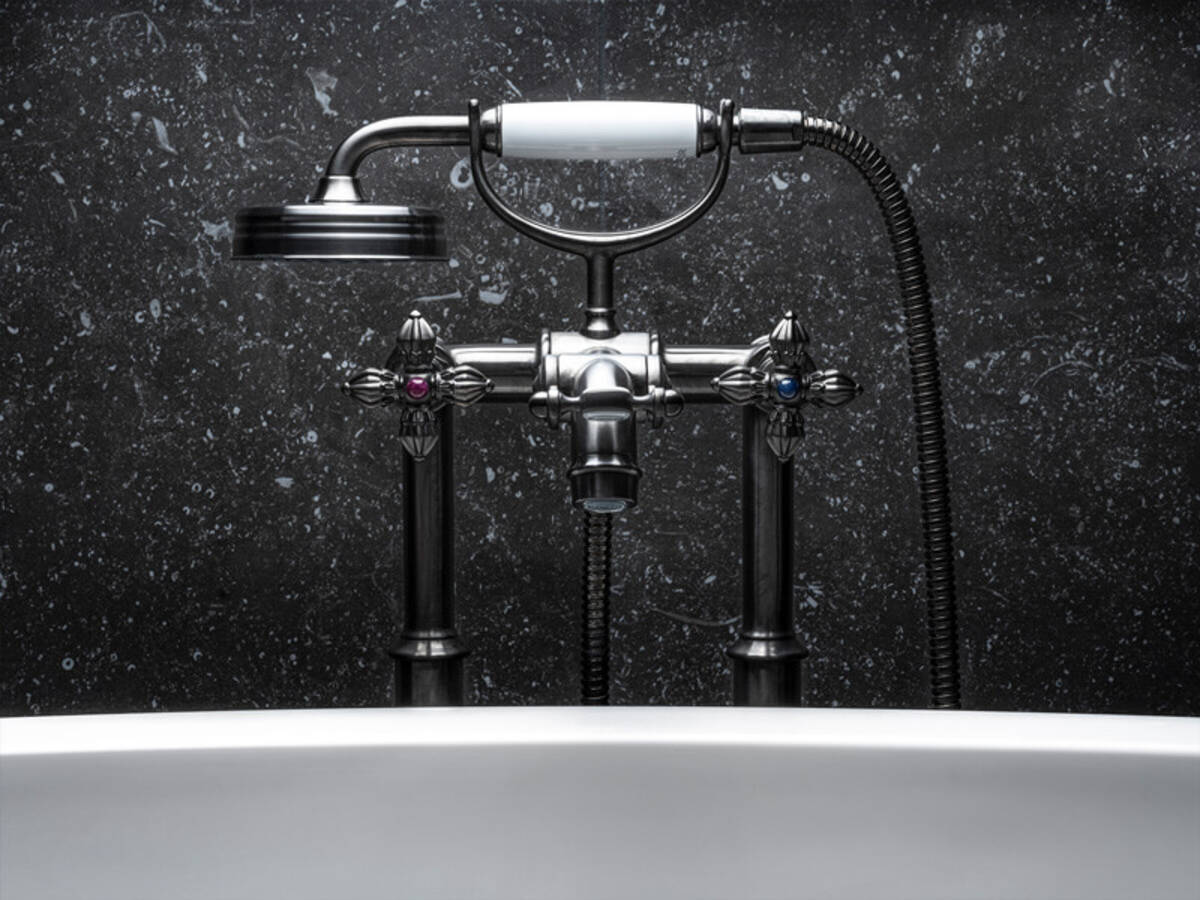Tristan Auer: Fisherman's House
Scroll on
- Reading time: 3 minutes
- Collections: AXOR Montreux, AXOR Montreux Kitchen Faucet
- Surface finish: Chrome

Contemporary luxury meets early 20th Century charm
The reasons for vacationing in Normandy are as diverse as the region itself. There are those seeking relaxation on its undulating coastline, while others opt for more active pursuits, such as hiking along the region’s dramatic cliffs. But all who visit this part of northern France encounter a unique atmosphere—a largely untouched landscape, rugged and beautiful, rich in history and home to a special way of life. It should come as no surprise, then, that renowned French interior designer Tristan Auer happened upon an early 20th century house here the heritage and potential of which he recognized immediately. Ushering new life into the property, Auer transformed it into an artistic expression of the history of the region and the stories of its inhabitants.

Minimalism as source of inspiration
Built in 1902, the "Fisherman's House" stands in the middle of a secluded property with old trees and a wending river. The townhouse’s flint clinker façade is typical of the region and creates, along with the tall, narrow windows and steep gable roof, a stately yet charming appearance. The former owners used the property as a canvas for their passions for art and fishing, holding events in the house for many years and welcoming guests to enjoy the artwork, furniture and decorations.
Copyright: Amaury Laparra

A unique interpretation of contemporary luxury
Buying the home with everything already in it, Auer was inspired to resist his impulses as a designer and instead to keep the house as it had always been. Absorbing the past into his textured, modern vision of emotional spaces, he created a wonderfully sensual experience within the "Fisherman's House". In each room, Auer expresses his unique interpretation of contemporary luxury while retaining the original furnishings and authentic soul of the house.

A pulsating mixture of styles
Tristan Auer applied his keen understanding for what is worth preserving and what must be renewed with care and confidence. His creativity, eye for detail and sensitivity becomes obvious in every room.The artistic highlight, however, is undoubtedly the entrance hall, with its striking fresco by artist Matthieu Cossé. Here, fantasy meets representation, sea meets land, delicate shades meet vibrant tones, and once again, the house tells the stories of its owners, current and past.
Copyright: Amaury Laparra

Furnished with AXOR Montreux in the bathrooms and kitchen
In the bathroom that originally served as an entrance room, a freestanding bathtub with lion claw feet catches the eye. Equally striking is the floor-standing AXOR Montreux bathtub faucet, its look characteristic of early 20th century industrial design. Standing before the fireplace and a ceiling-high mirror, the faucet evokes the charm of the luxurious Belle Époque bathrooms of the grand hotels of Europe. At the washbasin, an AXOR Montreux three-hole basin faucet with a high, curved spout and separate lever handles completes the classic bathroom ambience.
Copyright: Amaury Laparra

Authentically completed
AXOR Montreux proves with each use that nostalgic design can be combined with cutting-edge technology and unsurpassed functionality. The bathtub faucet, for example, features authentic casing yet allows for convenient switching between spout and shower head, and includes a hand shower with a state-of-the-art spray type. Faucet details, meanwhile, reflect traditional craftsmanship, including porcelain inlays on the handles and the slip-fit pipes. No wonder AXOR Montreux, a unique statement of authentic yet contemporary design in the kitchen as well as the bathroom, was the perfect choice for Auer’s vision of the “Fisherman’s House”.
Copyright: Amaury Laparra
More from the AXOR distinctive campaign
Trusted partners










